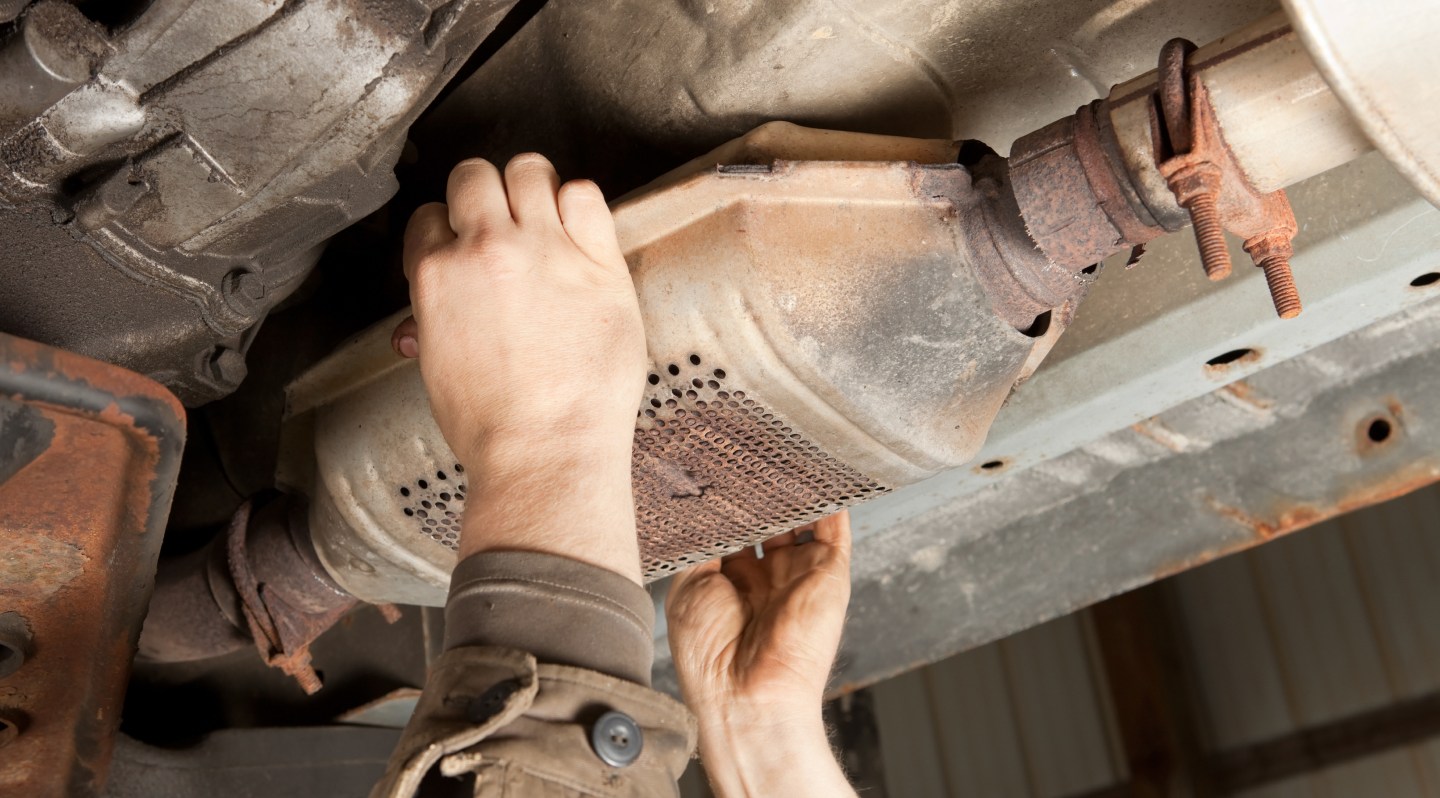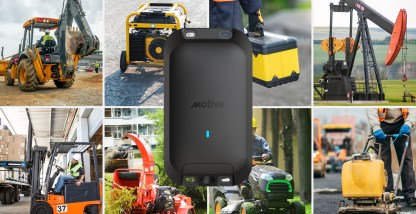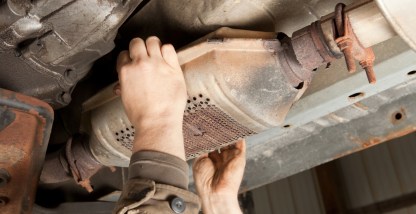Sustainability efforts have changed vehicle manufacturing. Manufacturers are now installing catalytic converters in some vehicles to help remove toxins from emissions. But the converters require precious metals that are in high demand, leading to an uptick of catalytic converter thefts. This article will discuss the issue and share catalytic converter theft prevention tips.
Why do people steal catalytic converters?
Catalytic converters have been fitted to gas-powered vehicles since 1992, and on diesel-fueled vehicles starting in 2001. But catalytic theft prevention is stealing more headlines now. Why? The precious metals in these converters have gone up in value.
Scrap metal dealers will pay for three metals the catalytic converter needs to remove toxins from vehicle emissions:
- Platinum
- Palladium
- Rhodium
These valuable metals are a hot commodity. In fact, the prices for even an ounce of one of these three materials has increased by hundreds of dollars in recent years.
Thieves only need a wrench or saw to remove what they’re after. They can slide under the vehicle and leave you without a catalytic converter in just a few minutes.
How much is a stolen catalytic converter worth?
The value of a stolen catalytic converter will depend on the vehicle it comes from. GuideOne Insurance reports, “Scrap metal dealers will pay close to $100 for the typical catalytic converter. However, the metals found in some exotic and foreign car models can fetch more money, even up to $400.”
Which vehicles are targeted for catalytic converter theft?
Any vehicle with a catalytic converter is at risk. However, thieves are more likely to target vehicles with a higher clearance, such as SUVs, vans, buses, and trucks. A higher clearance makes it easier for them to get under the vehicle and get away with the goods quicker.
Hybrids, such as the Toyota Prius, are top targets. Foreign car models can also be at higher risk as the metals can net more money for the thieves.
Older model vehicles can be targeted more as well since newer models have catalytic converters that use a lower quantity of precious metals.
How much is a new catalytic converter?
The cost of replacing a catalytic converter depends on the quality of the converter and your vehicle type. Cash for Clunkers puts the average replacement cost in the $1,000-$2,500 range. A commercial fleet will also lose efficiency while the vehicle is repaired and the converter is replaced.
It’s not illegal to drive without a catalytic converter, but your vehicle won’t function as well. You’ll also undermine fuel economy efforts.
How to know if a catalytic converter is stolen
Some common signs include loud noises, especially when starting or accelerating, as the exhaust is now unregulated.
Worst case scenario is you’ll realize you’re without the converter when you fail your annual vehicle emissions inspection.
Note: If the authorities find out you’re driving without a catalytic converter, you could be fined.
What to do if a catalytic converter is stolen
Of course, you’ll do all you can to prevent catalytic converter theft. However, if a catalytic converter is stolen:
- Report the theft to police.
- Contact your insurer.
- Replace your converter.
- Consider calling other businesses in your area to raise community awareness.
Does insurance cover catalytic converter theft?
If your insurance policy covers theft, you’re likely covered for catalytic converter theft, but you’ll have to cover the deductible.
GuideOne states, “On average, the repair cost from this type of theft is about $1,500. However, this cost does not include your deductible, which can be anywhere between $250 to $1,000.” At that rate, it can be more cost-effective to invest in catalytic converter theft protection.
How to prevent catalytic converter theft
The following strategies can help you prevent catalytic converter theft:
Park defensively
Park vehicles with catalytic converters in locked garages. If that isn’t possible, leave the vehicle somewhere highly visible. Since organized catalytic converter thieves will target repair shops and parking lots with fleets of vehicles, avoid parking in these after dark.
Blocking access to the underside of the vehicle, particularly at the exhaust end where the catalytic converter is located, can also help.
Secure fleet parking
Live video surveillance cameras can help deter criminals. Even effective lighting can reduce the chances that crooks will target your vehicle fleet parking lots. Fencing the fleet parking lot also adds a layer of security.
Weld bolted catalytic converters
Experienced thieves can remove a catalytic converter with a saw or wrench. You can deter the ones who use wrenches if you weld the bolts of a bolted catalytic converter. The bad guys with saws will still be able to get at your metals, but you’ll at least cut down on the likelihood of theft.
Etch the converter
Etching a unique identifier onto the catalytic converter can deter thieves as it may stop garages from buying the converter. The number helps to identify stolen converters. It also helps to put a sticker in the vehicle window announcing the converter is marked with an identifier.
Add protective coverings
You can buy a protective device (e.g., a CatClamp) to help deter thieves. You’ll strap a hardened steel cover over the potential cutting area to make it more difficult for thieves to remove the converter.
Geofencing
Take advantage of digital technology and draw a geofence around the trailer to alert you if it moves. With Motive’s geofence alerts, users can receive emails when the vehicle enters or exits a geofence. The information will include the time, date, geofence name, geofence category, and asset ID to support your asset tracking and theft protection efforts.
How to keep your commercial vehicles safe with Motive
There’s little doubt that asset tracking can help you prevent catalytic converter theft. Motive’s Asset Gateways provides visibility into both live or historical asset locations, making it easier for fleets to prevent theft or misuse. Fleet managers can also draw virtual boundaries around vehicles and be alerted whenever that asset crosses a geofence.
Learn more about Motive’s solutions and how they combat cargo theft or trailer theft. Protect your catalytic converters and other assets with the power of real-time data available in Motive’s digital dashboard. Contact us today.







